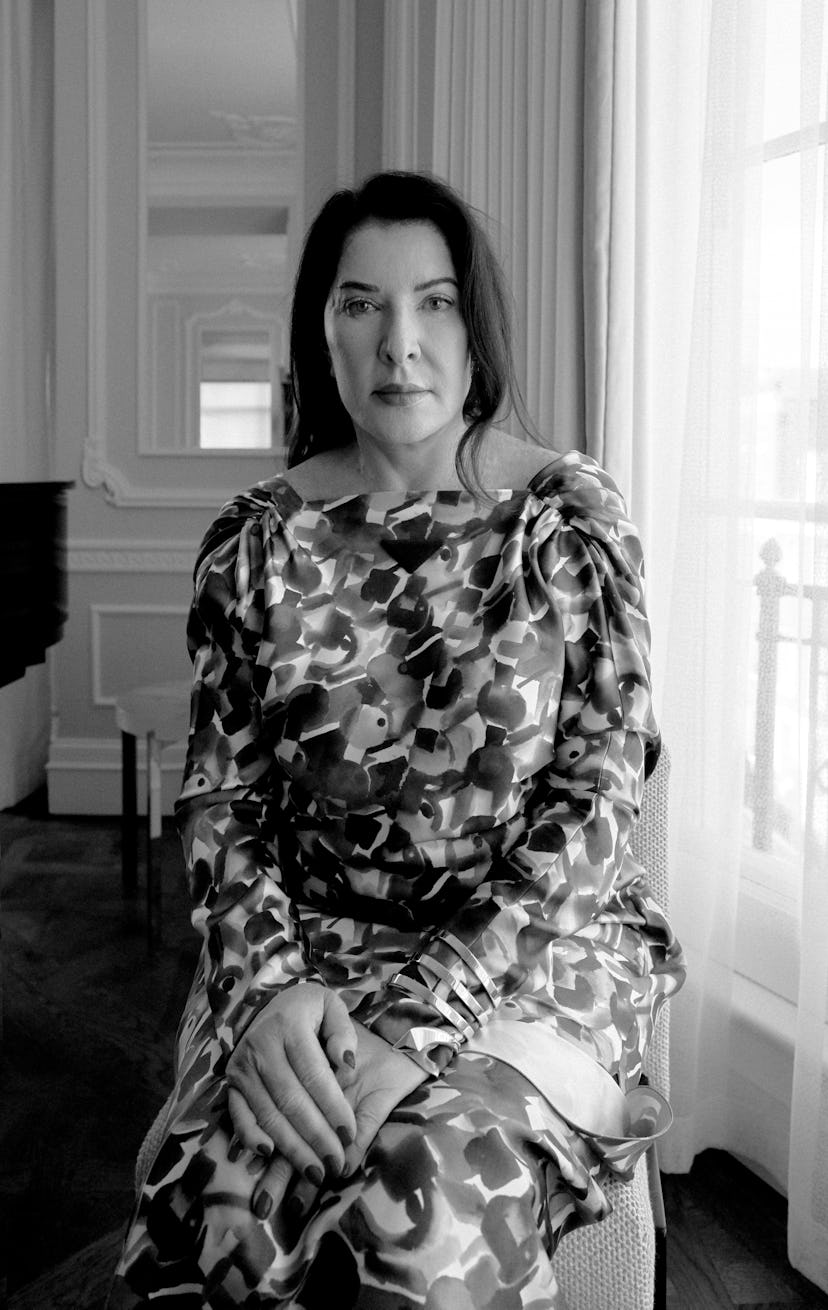To Celebrate Her 80th Birthday, Marina Abramović Will Make History in Venice

Marina Abramović was 14 years old the first time she attended the Venice Biennale. Traveling by train with her mother from her hometown of Belgrade, Serbia, she was moved to tears at the sight of the Italian city. “It was so incredibly beautiful—unlike anything I had ever seen,” the artist recalls.
Sixty-six years later, Abramović will return to Venice on the occasion of her 80th birthday, making history as the first woman to be honored with a dedicated exhibition at the Gallerie dell’Accademia di Venezia.
Coinciding with the 61st Venice Biennale and set to be shown from May 6 to October 19, 2026, Marina Abramović: Transforming Energy offers an immersive journey where the material and immaterial converge. Curated by Shai Baitel, artistic director of the Modern Art Museum (MAM) Shanghai, where the exhibition first debuted in 2024, the expansive installation invites visitors to engage body and spirit by sitting, lying, or standing upon Transitory Objects: stone beds and structures embedded with crystals such as quartz and amethyst, designed to serve as conduits for what the artist describes as “energy transmissions.”
Abramović has long made history by testing the limits of body and mind in the name of performance art, a pursuit that in 1997 made her the first woman to win the prestigious Golden Lion award, also in Venice. Yet, her Transitory Objects reveal another side of her work, one rooted in permanence. “Documentation of performance, the re-performance of my pieces, this is very important. But my Transitory Objects, they transmit my aura, my sensibility,” she tells W.
Propitiating moments of heightened awareness and deep feeling lie at the heart of Abramović’s oeuvre, and with her Transitory Objects, she hopes this legacy will continue far beyond herself. Speaking about this dimension of her practice, Abramović says: “This is an essential part of the work. It lives alongside the Abramović Institute, alongside the younger performers who continue my practice. But these objects have a longer mission. The minerals, the crystals, they suggest eternity, geological time. They carry my work far into the future, longer than the body can.”
Throughout her decades-long career, Abramović has been adamant about the importance of staging exhibitions that educate and bring awareness to the public, a scholastic intention she shares with the Accademia. In this spirit, Transforming Energy was carefully curated as an experience set to engage the audience with the historical and physical context of the museum. “This history, together with my work, creates a field of energy I hope people can feel,” the artist adds.
Installed throughout the museum’s permanent collection as well as its temporary exhibition spaces, Abramović’s sculptural pieces will resonate against the Accademia’s incomparable artistic heritage. Alongside them, seminal works by the artist including Imponderabilia (1977), Rhythm 0 (1974), Light/Dark (1977), Balkan Baroque (1997), and Carrying the Skeleton (2008), will also be on show. A standout work of the exhibition is Abramović’s Pietà (with Ulay) (1983), a haunting photograph of the artist in a crimson dress adopting the pose of the Virgin Mary while cradling her former partner Ulay, echoing Titian’s final, unfinished Pietà (c. 1575–76) completed by Palma Giovane—a legendary canvas housed within the Accademia’s permanent collection.
For Abramović, this conversation across centuries is central to the show’s meaning. “I am very excited to be in dialogue with the great masterworks here—especially Titian’s Pietà. I am not a religious person, not even spiritual in the usual way, but there is a strong energetic resonance in these works,” Abramović says. “In Shanghai, [the show was about] transmitting energy into the future. Here in Venice, it’s about harnessing the energy of the past.”